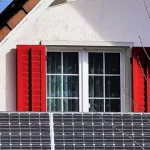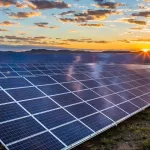Table of Contents
Introduction
As the demand for renewable energy continues to surge, advancements in solar technology have broadened the spectrum of component choices available to us. Among these, IBC (Interdigitated Back Contact) full black solar modules have garnered special attention due to their superior performance and suitability for specific applications. This is particularly true in winter or under low-light conditions, where selecting the right solar module is crucial for optimizing the overall system performance. This article aims to delve deep into the comparative performance of these two types of modules – IBC full black and bifacial glass-glass – under winter and low-light conditions, providing a series of real-world tests to offer a solid foundation for your decision-making process.
In this context, solar PV expert M1Molter from Germany, has conducted a comprehensive comparison and analysis of Maysun Solar’s 430W IBC full black modules against similarly rated bifacial glass-glass modules. The primary goal of this analysis is to uncover the performance differences between these two advanced technological solutions in winter or low-light conditions, thereby assisting users in making more informed choices amidst a variety of options.
Module Introduction and Technical Principles
IBC Full Black Modules
IBC (Interdigitated Back Contact) technology places all electrical contacts on the solar module’s rear side, effectively eliminating front-side electrodes. This design minimizes light shading and maximizes the surface area available for light capture. The utilization of a back-contact structure enhances the module’s ability to absorb more light, significantly improving photovoltaic conversion efficiency. Although IBC full black modules are designed with a single glass layer, they are offered with a 25-year warranty, reflecting the manufacturer’s confidence in their durability and sustained performance.

Efficiency: 21-22.5%
Dimensions (L × W × H): 1722 x 1134 x 30 mm
Weight: 20.8kg
Packaging:36 pieces/pallet, 936 pcs/40'HQ
Warranty: 25-year performance warranty

Efficiency: 21.7-23.1%
Dimensions (L × W × H): 1722 x 1134 x 30 mm
Weight: 20.8kg
Packaging: 36 pcs/pallet, 936 pcs/40'HQ
Warranty: 25-year product and performance warranty

Efficiency: 21.5-23.2%
Dimensions (L × W × H): 2278 x 1134 x 30 mm
Weight: 27.5 kg
Packaging: 36 pcs/pallet, 720 pcs/40'HQ
Warranty: 25-year product and performance warranty
Bifacial Glass-Glass Modules
Bifacial glass-glass modules feature a dual-layer glass encapsulation technology, with solar cells sandwiched between two layers of high-strength, high-transparency glass. This arrangement not only affords extra protection, prolonging the module’s lifespan, but also bolsters its resilience to environmental factors. Importantly, these modules are capable of generating electricity from both the front and back sides, enabling light capture and energy conversion from both directions. This attribute greatly enhances the module’s energy capture efficiency, especially in less-than-ideal lighting conditions, where the ability to harness diffused and reflected light can lead to increased power output. Compared to IBC full black modules, bifacial glass-glass modules generally come with a longer warranty period of up to 30 years.
Test Environment Setup
This testing was conducted under simulated winter lighting conditions, including full sunlight and overcast scenarios without direct sunlight. The aim was to comprehensively assess the performance of the modules under varying weather conditions. Through this approach, we ensured the provision of a fair and accurate benchmark for comparison, aiding users in making more informed choices among a wide array of solar modules.
Testing Methodology
Our testing was carried out using strict scientific methods, which included:
1.Installing both types of modules under identical conditions and orientations.
2.Utilizing precise measurement tools to record real-time power output and cumulative electricity generation.
3.Monitoring environmental conditions during the test period, such as light intensity and temperature.

Testing Process
Initial Test (Under Full Sunlight Conditions in Winter)
430W Bifacial Glass-Glass Solar Module: During full sunlight exposure, initial testing indicated that the stable output power of the 430W bifacial glass-glass solar module was 283 watts, with a peak reaching 315 watts.
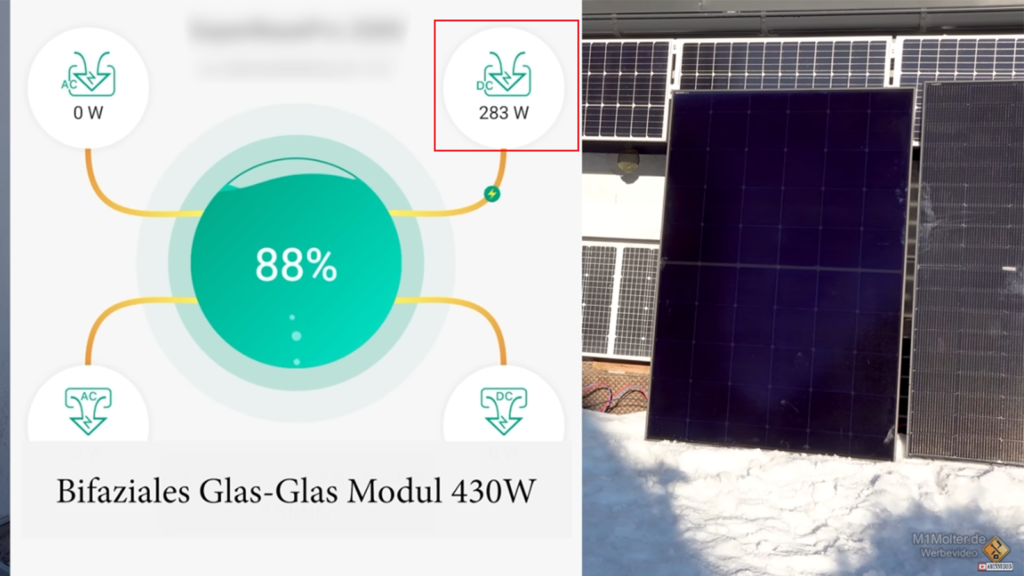
430W IBC Full Black Solar Module: In contrast, the 430W IBC full black solar module exhibited slightly higher output power under the same conditions, stabilizing around 310 watts, with the peak also reaching 310 watts.
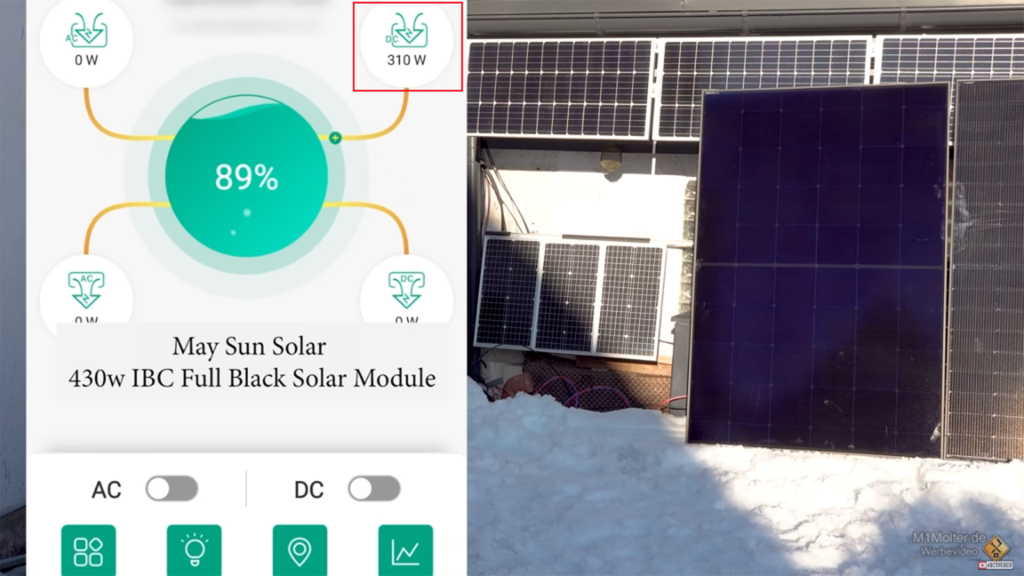
Long-Term Testing (Over Two Weeks, Including Adverse Weather Conditions)
During the long-term testing conducted under adverse weather conditions, the performance differences between the 430W IBC full black solar module and the 430W bifacial glass-glass solar module became more pronounced.
430W IBC Full Black Solar Module: Over approximately 10 days of testing, the 430W IBC full black solar module generated 2.6 kilowatt-hours (kWh) of electricity.
430W Bifacial Glass-Glass Solar Module: In the same period, the 430W bifacial glass-glass solar module produced 2.16 kilowatt-hours (kWh) of electricity.
Performance Comparison
Power Output Comparison Under Full Sunlight Conditions in Winter
Under full sunlight conditions in winter, Maysun Solar’s IBC full black module consistently produced an output power of 310 watts, with a peak power also at 310 watts. In contrast, under the same conditions, the bifacial glass-glass module’s stable output power was only 283 watts, with a peak power of 315 watts. This data clearly demonstrates the performance advantage of the IBC full black module over the bifacial glass-glass module in low-light conditions.
Long-Term Power Output and Electricity Generation Comparison (Over Two Weeks, Including Low-Light Conditions)
Based on the test results, over a period of approximately two weeks (including winter’s low-light conditions), the 430W IBC full black solar module generated 2.6 kilowatt-hours (kWh) of electricity, while the 430W bifacial glass-glass solar module produced 2.16 kilowatt-hours (kWh) of electricity. The 430W IBC full black solar module generated about 20% more electricity than the 430W bifacial glass-glass solar module. This indicates that the 430W IBC full black solar module performs better under low-light conditions.
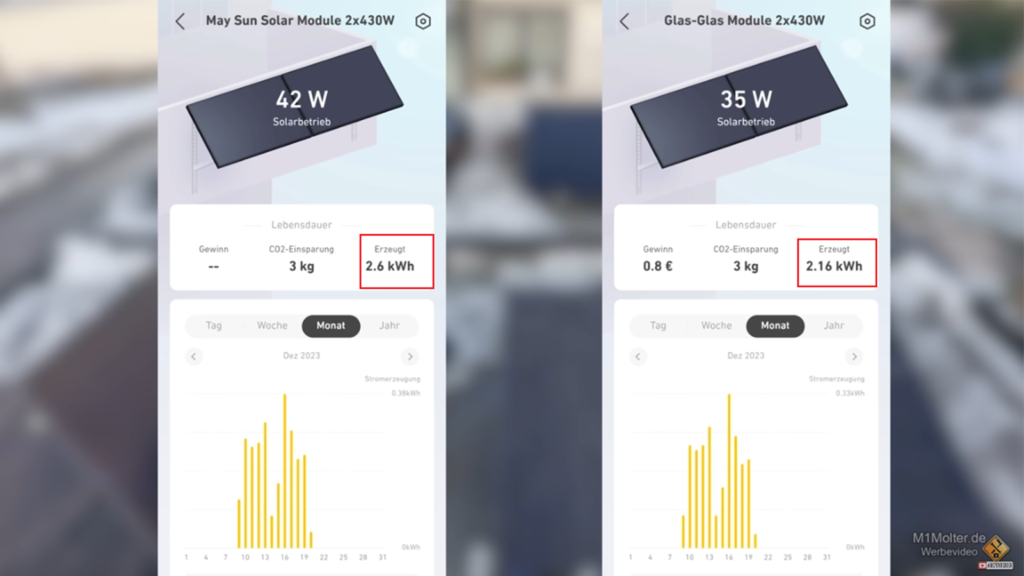
On a specific test day (around December 16th), the peak power output of the 430W IBC full black solar module reached 117 watts, while the peak power output of the 430W bifacial glass-glass solar module was 100 watts. This further confirms the performance advantage of the 430W IBC full black solar module under low-light conditions, showing an improvement of 17% in comparison.
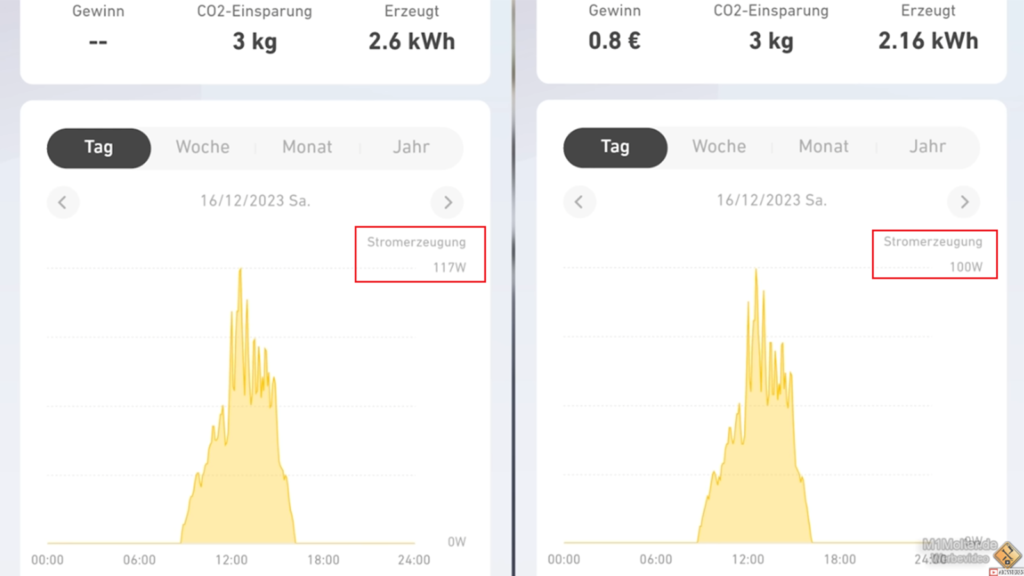
These data vividly illustrate the performance comparison between the two types of solar modules under various test conditions. The IBC full black module demonstrated higher power output and energy production in almost all test scenarios, especially under low-light conditions, highlighting its advantages in efficiency and applicability.
Design and Aesthetic Appeal
Elegant Full Black Design: The full-black design scheme not only enhances aesthetic appeal but also allows the solar panels to blend more harmoniously into rooftops or other installation environments, offering a more uniform and elegant appearance to structures. This aspect is particularly important for users who place a high value on architectural aesthetics.
Increased Photovoltaic Conversion Efficiency: Beyond its significant aesthetic appeal, the use of a busbar-free design in solar panels reduces potential shading on the panel surface. Traditional metal ribbon designs can block a portion of the light, whereas the busbar-free design minimizes this shading and increases the light-receiving area by 2.5%, effectively boosting photovoltaic conversion efficiency.
No Glare Pollution: Solar panels manufactured without soldering processes ensure a light reflectance rate of only 1.7%, significantly reducing the potential for glare pollution that could affect the environment and nearby residents. This design not only focuses on performance optimization but also reflects a commitment to environmental protection.
A Perfect Blend of Performance and Aesthetics: Maysun Solar’s IBC full black modules demonstrate a perfect combination of performance and aesthetic appeal. They excel under low-light conditions, providing higher energy output than traditional solar panels, and their modern design adds extra visual attraction to solar solutions.
Superior Low-Light Performance: The product performs exceptionally well in low-light environments, making it especially suitable for Europe’s low-radiation sunlight conditions. Over a 10-day period in winter, its electricity generation was approximately 20% higher than that of TOPCON modules, offering the highest cost-effectiveness and additional benefits.
Recommendations
When selecting solar modules suitable for winter or low-light conditions, it’s essential to consider multiple factors, including performance, cost, aesthetics, and long-term benefits. Based on our comparative analysis and testing, here are some recommendations:
1.Maximize Energy Capture: For those in areas with less sunlight or frequent cloudy and rainy weather, IBC full black modules are an ideal choice due to their excellent low-light performance. These modules can capture more light under insufficient lighting conditions, providing higher photovoltaic conversion efficiency
2.Prioritize Efficiency: Given the significant performance advantages of IBC full black modules demonstrated in tests, particularly in terms of real-time power output and long-term electricity generation, choosing this type of module can ensure that your system remains efficient even under less than ideal lighting conditions.
3.Consider Return on Investment:Although the initial investment in IBC full black modules may be higher than traditional solar solutions, their efficiency and long-term stability mean quicker payback and higher long-term returns, making IBC modules a cost-effective choice.
4.Combination of Aesthetics and Performance:The design of IBC full black modules is not only outstanding in performance but also offers a modern and harmonious aesthetic effect for rooftops or installation sites. This is an added advantage for users seeking both practical and aesthetically pleasing solar solutions.
5.Sustainable Choice:Opting for IBC full black modules is also an investment in sustainability. These efficient modules can reduce reliance on fossil fuels and greenhouse gas emissions throughout their lifespan, contributing to the energy transition.
Conclusion
For those pursuing high-performance solar solutions without compromising architectural beauty, Maysun Solar’s IBC full black modules offer an ideal choice. These modules are not only efficient but also beautifully designed, perfectly aligning with the growing contemporary market focus on sustainability and aesthetics. They provide an eco-friendly and visually appealing energy solution for modern buildings. On the other hand, for those who prefer a longer warranty period and are willing to adjust their aesthetic expectations slightly, bifacial glass-glass modules are also worth considering. While this may involve some compromise in appearance, the up to 30 years warranty period they offer ensures the long-term value and reliability of the investment. Whether opting for the advanced technology of IBC full black modules or the durable resilience of bifacial modules, the market offers solar solutions to meet diverse needs and preferences.
Reference:
Recommend Reading:

How to Calculate Solar System ROI and Optimize Long-Term Returns?
Solar power is becoming a key solution for businesses to reduce costs and improve efficiency. Accurately calculating ROI and optimizing long-term returns are essential to maximizing investment value.

Will Agrivoltaics Affect Crop Growth?
Agrivoltaics combines solar energy and agriculture to reduce up to 700 tons of CO₂ per MW, improve water use, and boost crop growth for sustainable farming.

6.5 Billion Loss Hits Photovoltaics: Reshaping or Elimination?
In 2025, the photovoltaic market may see a turnaround as some companies take early action. A €6.5 billion loss is driving businesses to explore new growth areas like energy storage and hydrogen. Which giants will break through? Industry transformation is accelerating!

What’s New in Solar Energy (March 2025)
March’s solar news highlights include rooftop solar meeting two-thirds of global demand, China’s market reforms potentially boosting solar demand and module prices, France revising solar targets in PPE 3, and challenges in Europe with declining capture rates and price volatility.
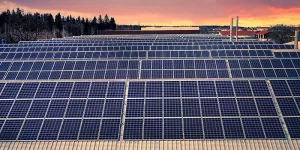
Zero-Investment Solar Projects: How to Earn Passive Income Through Rooftop Leasing?
Monetize your idle rooftop and earn stable annual rent! With the photovoltaic rooftop leasing model, businesses can generate long-term revenue without investment, reduce operating costs, and achieve a green transition.

How to Optimize Photovoltaic Power Plant Operations with AI and Big Data
This article explores three methods of using AI to enhance power generation revenue and reduce operation and maintenance costs in intelligent photovoltaic operations.


